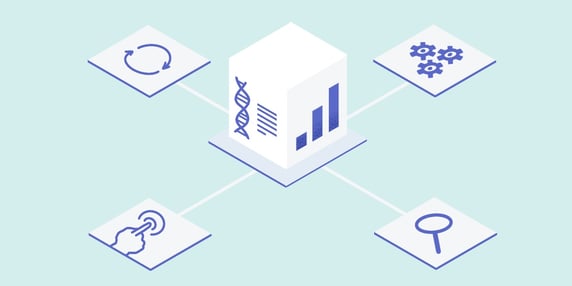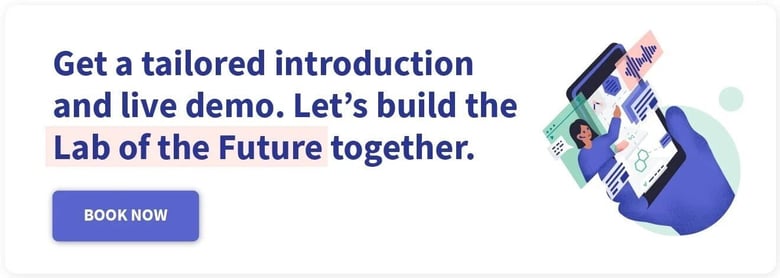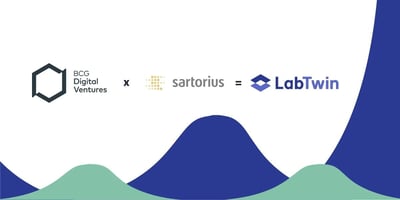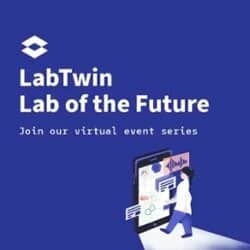Building the Lab of the Future is more than just gathering all the latest technologies together in one lab. These technologies must create a complex ecosystem that connects devices to each other, and to scientists, to enable seamless workflows and dataflows. A connected lab builds digital bridges between scientists, lab devices, databases and other lab informatics.
We recently gathered together experts from Novartis, Roche, Elemental Machines and LabTwin to discuss how voice assistants (aka ‘digital lab assistants’) can augment a smart lab ecosystem by connecting scientists to their digital tools.

A Natural Interface for Connected Labs
In the last 20 years, R&D labs have moved away from paper-based documentation and have adopted digital documentation tools such as electronic lab notebooks (ELNs) and laboratory information management systems (LIMS). Both ELNs and LIMS simplify knowledge management and offer Intellectual Property (IP) protection. However, scientists must use a mouse and keyboard, or touchscreen, to access these tools, which is not always possible in the lab environment.
“In the lab, data needs to be captured, queried and accessible,” says Andreas Steinbacher, Lead Discovery Informatics Data Management at Roche, “and this is where voice-powered lab assistants can really help, working hand-in-hand with ELNs and LIMS.”
Digital lab assistants can connect scientists to ELNs, LIMS, databases and lab instruments through voice rather than manual methods. With a voice-powered lab assistant, scientists can access the information they need from anywhere in the lab, without using their hands.
“Voice is a natural user interface,” says Andrew Garrood, Global Service Delivery Manager End User Computing Client Devices at Novartis.
Bringing Context to Data
R&D companies gather vast amounts of data. To get the most out of this data, labs should interlink data collected from different parts of a workflow and enrich it with context and metadata. This remains a real challenge for many companies.
“Context is everything,” says Magdalena Paluch, CEO and co-founder of LabTwin, “and the role of the Digital Lab Assistant is to become an expert in context.”
Information about context can come from the scientists themselves, the equipment and reagents they use or environmental conditions. For example, Sridhar Iyengar, CEO of Elemental Machines, develops environmental sensors that provide metadata. He envisions digital lab assistants using such metadata to bring context to experimental steps or to notify scientists of any deviations.
Connecting Automation Islands
Automation can improve efficiency and reduce repetitive manual processes in labs. However, R&D requires flexibility, and this prevents full automation of all lab workflows. Instead R&D labs often comprise several isolated ‘automation island’ that are only connected by lab staff.
“To connect those islands, you want a voice or AR companion with you, allowing you to design your digital workflow in real time,” says Andreas Steinbacher.
Voice-powered digital lab assistants can also guide lab staff through complex protocols or equipment repair.
“This requires the help of a skilled engineer normally,” says Andrew Garrood, “but a voice assistant could help you replace an HPLC column without external help.”
Novartis is trialing smart glasses and voice assistants for exactly this purpose. Moreover, digital lab assistants can help engineers train the robots that perform automated tasks and document this process.
“Our customers see digital lab assistants as enablers of lab automation,” says Magdalena Paluch.
Enabling Remote Data Access
There has always been a need to remotely access data from laboratories, and this has only accelerated during the recent Covid-19 pandemic. However, it is still relatively difficult to monitor ongoing lab experiments and intervene to tweak parameters from a remote location.
Digital lab assistants can provide that connection by allowing scientists to receive notifications while working from home and to communicate with lab systems without traveling into the lab.
On the flipside, as human presence in the lab has been limited during the pandemic, digital lab assistants are becoming an effective replacement for human assistance. If colleagues are not available to help, digital lab assistants can guide scientists through new SOPs, offer support with documentation and provide answers from remote specialists, in real time at the point of experimentation.
Learn More
To learn more about how voice-activated digital lab assistants can help you build the Lab of the Future, watch the full roundtable discussion











